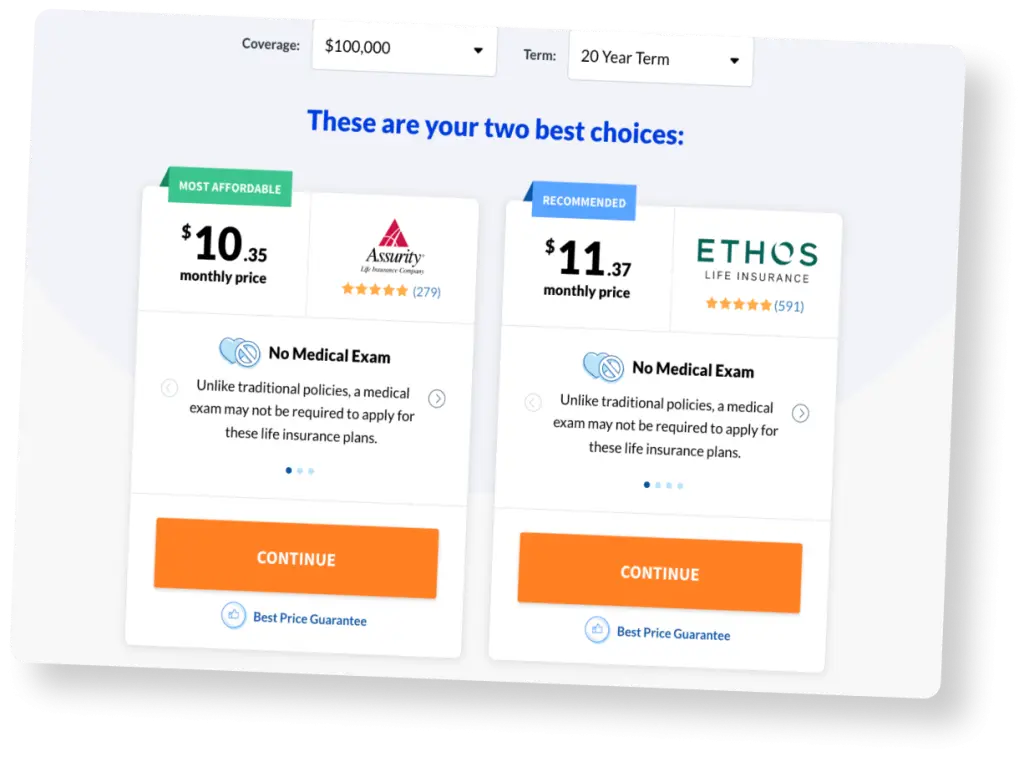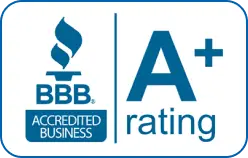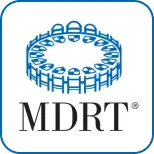Are you taking advantage of the strategies available to reward your key employees and executives? Have you considered the thought of a top sales person or manger leaving your firm to accept a better offer elsewhere?
Successful companies understand the importance of rewarding their key employees, and using a key man life insurance policy is one way to do it. An executive compensation option that offers simplicity and is easy to implement is the Executive Bonus Plan.
Retaining and attracting key employees is crucial to the ongoing success of any company. In today’s competitive job market, it becomes increasingly important to offer additional benefits to these selected key people.
Key Takeaways of Executive Compensation Plans Using Life Insurance
-
Executive bonus plans using life insurance offer companies a simple way to reward and retain key employees with tax-advantaged benefits.
-
These plans allow for selective participation, giving companies the flexibility to choose specific executives or management positions.
-
Bonuses are taxable to the executive but generally tax-deductible for the business, with the potential for tax-deferred cash value growth in the policy.
-
Variations like double bonus and controlled executive bonus plans offer additional options for company control and executive incentives.
-
While offering many advantages, executive bonus plans also have limitations, such as limited company control and potential estate tax implications.
Using Life Insurance For Executive Compensation Plans
Many successful businesses recognize the importance of their key employees and use executive benefit plans to provide added supplemental benefits. Many executive benefit plans allow the company to discriminately choose the key executives that may participate and reward them for their valued service. In most cases, a cash value life insurance policy is an ideal vehicle for funding these executive compensation arrangements.
The advantages of using cash value life insurance include potential tax free death benefits and tax deferred growth of cash value.
The most popular types of executive compensation plans include: the Deferred Compensation Plan, Salary Continuation Plan, and Supplemental Executive Retirement Plans (SERPs). The plan that works best for your company will depend upon the structure of your business and the objectives of the business owners.
trusted by 5,000+ clients
Get Personalized Quotes Tailored to Your Company’s Needs
What is an Executive Bonus Plan?
An executive bonus plan (Section 162) is a way for business owners or companies to provide additional supplemental benefits to key employees or executives of their choice. The benefits usually include life insurance policy death benefits as well as cash value accumulations that can be used as a retirement income supplement. With an executive bonus plan, the business can use tax deductible company funds to selectively provide valued benefits to key people. An executive benefit plan, used effectively, can be a valuable tool to attract and retain key executives.
Executive bonus plans are simple in design and easy to implement. The executive bonus plan works as follows:
-
The company provides the key executive with a bonus that is taxable as income to the recipient. The bonus is generally a deductible business expense for the company.
-
The key employee may choose to use the bonus to purchase a whole life or universal life insurance policy that builds cash value that grows tax deferred.
-
The life insurance policy, if properly structured, may provide an attractive benefit to the executive in the form of cash value growth. Any cash value accumulation will grow tax deferred and may be accessed by the employee income tax-free through withdrawals and policy loans. The policy’s cash value can be used to supplement retirement income or for any other financial need.
-
If the key executive dies, in most cases, his or her heirs will receive the death benefit proceeds from the life insurance policy income tax free.
-
Variations of Executive Bonus Plans
In addition to the basic executive bonus plan, there are other common plan variations. These options include a double bonus arrangement and a restricted or controlled executive bonus plan.
With a double bonus arrangement, the company will provide the key executive with a bonus large enough to pay the life insurance premiums as well as the income taxes incurred by the key executive on the bonus. The company can use the double bonus arrangement to eliminate any out of pocket expense for the key executive.
If the company wishes to retain some measure of control over the bonus, the controlled executive bonus design is a good choice. With a controlled executive bonus, the company and the key executive enter into an agreement which includes a vesting schedule on the policy’s cash value growth. The vesting schedule is a form of “Golden Handcuffs” that allows a company to limit the availability of the cash value benefits until the executive has fulfilled the terms of the agreement. At that time, the executive is “vested”. Once the key executive is vested, they gain full and complete access to the policy’s cash value.
Advantages of Executive Bonus Plans
Executive bonus designs using life insurance have several advantages including:
-
An executive bonus plan is simple to implement and easy to administer.
-
The business can selectively choose the key employees they wish to reward.
-
The bonus payments may be considered a fully deductible expense to the company.
-
The key employee is able to name the beneficiary of the entire death benefit of the life insurance policy.
-
In many cases, unless there is a “restricted or controlled executive bonus”, the key executive will have immediate access to policy cash value and may access that cash value without income tax through policy loans and withdrawals.
-
Executive bonus plans are not subject to “qualified plan limits”.
Disadvantages of Executive Bonuses
There are also some inherent disadvantages in using an executive bonus plans including:
-
The company is unable to fully recover its costs from the policy’s death benefit since the key executive names the policy beneficiary.
-
Executive bonus plans offer the company very little control of the policy. Even if a controlled executive bonus is utilized, it only restricts the key employee’s access to the policy’s cash value. The bonus is never recovered by the company even if the key employee leaves the company prior to vesting.
-
The key executive must include any bonus in his or her taxable income.
-
Without additional planning, the life insurance policy’s death benefit will be include-able in the key executive’s taxable estate.
¹ The deductibility of the employee bonus is subject to the reasonable compensation limits established by (Section 162-a of the Internal Revenue Code).
² The tax free status of withdrawals and loans is subject to the policy being a non-MEC policy. After the initial 15 policy years withdrawals can be made up to the policy’s cost basis income tax free. Once the policy’s cost basis has been reached through withdrawals, policy loans may be access without income taxation subject to certain conditions. Withdrawals, policy loans and partial surrenders will reduce policy values and may reduce death benefits.
This information is for illustrative purposes only. MEG Financial and its representatives are in no way providing tax or legal advice. Please consult your CPA or tax attorney for any questions on the taxes as they relate to your specific circumstances.
Federal Regulations for Executive Compensation
The Securities and Exchange Commission have led to stricter disclosure requirements for public companies regarding executive pay, including total compensation, stock awards, and variable compensation tied to company performance. These rules ensure transparency and help create fair comparisons across industry peers and respective industries.
While public companies must adhere to tighter executive compensation laws, private companies have greater flexibility in how they structure their plans, especially when aligning them with company strategy, compensation data, and the specific life cycle of the organization. The use of life insurance can also allow executives to build additional value through company stock or cash value accumulation, while addressing talent retention and long-term organizational success.
When managed poorly, such programs can create risks to stock price and public perception. But when structured thoughtfully, executive receives terms, and performance metrics, these plans can effectively motivate executives, support revenue growth, and reinforce company culture.
Frequently Asked Questions about Executive Compensation Plans Using Life Insurance
Can Life Insurance Be Used to Compensate Executives?
Yes, life insurance can be part of an executive compensation, also known as executive pay plan, often used through strategies like split-dollar or deferred compensation agreements, where the policy builds cash value or provides a death benefit as a financial benefit to the executive.
What is a Typical Executive Compensation Package?
A typical executive compensation package includes a base salary, performance bonuses, stock options or equity, retirement plan contributions, and other benefits such as health insurance, company cars, or life insurance.
What Are the Different Types of Executive Compensation?
Executive compensation can include direct forms like salary and bonuses, and indirect forms such as stock options, deferred compensation plans, retirement benefits, and various insurance packages.
Conclusion and Summary of Executive Compensation Plans Using Life Insurance
Designing competitive executive compensation plans has become a critical part of how both private companies and publicly traded companies attract and retain executive talent. Beyond offering a fixed yearly salary, many organizations are shifting toward comprehensive compensation structures that include fixed compensation, cash compensation, short term incentives like annual bonuses, and long term incentive programs tied to performance metrics and company goals.
Life insurance-based plans, when structured properly, allow company executives, including the chief executive officer, vice presidents, and other top management positions, to receive long term incentive benefits and other compensation, while helping the company meet key financial objectives and coordinate organizational operations more effectively.
However, any executive compensation plan, particularly one that includes executive perks, must be closely aligned with shareholder value and stock performance. Whether evaluating options for private or public firms, integrating life insurance into executive compensation remains a practical and strategic approach to rewarding top leadership in today’s complex compensation environment.














